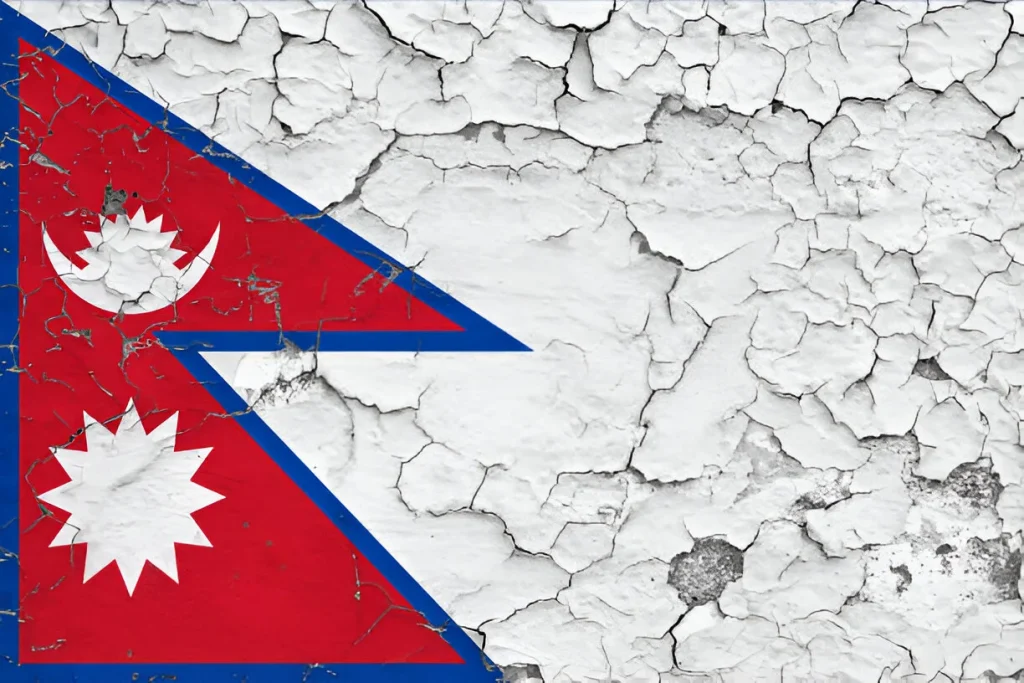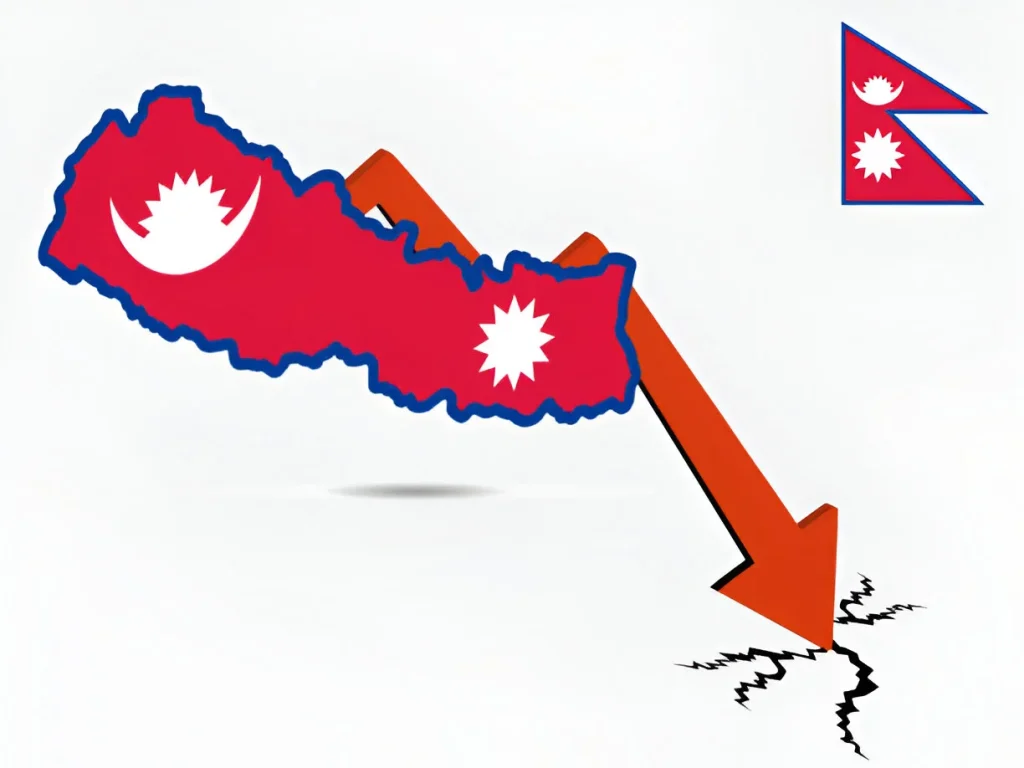Navigating the landscape of Nepali politics can often feel like watching a fast-paced drama with a constantly changing cast of characters. The persistent political instability of Nepal has become a defining feature of the nation’s modern history, shaping everything from its economic development to the daily lives of its citizens. If you’re new to this topic, the frequent shifts in government and complex web of political alliances can seem overwhelming. This article is here to act as your friendly and supportive guide, breaking this intricate subject into understandable pieces.
Imagine trying to build a house on shifting sand; that’s an apt analogy for Nepal’s struggle to establish a stable political foundation. The country has experienced monumental changes in a relatively short period, including a civil war and the abolition of its monarchy. These events have left a legacy of fractured politics and an ongoing quest for lasting consensus.
In this comprehensive guide, we’ll unpack the key elements of this complex issue. Here’s a quick look at what you’ll discover:
- The Historical Roots: Uncover why the 240-year-old monarchy ended and understand the lasting impact of the decade-long Maoist insurgency.
- The Core Drivers of Turmoil: Learn about the main factors fueling the instability today, from fragile coalition governments to deep ideological divides and foreign influence.
- Real-World Consequences: Understand how political turmoil directly affects Nepal’s economy, drives the mass migration of its youth, and impacts the daily lives of its people.
- The Path to Stability: Explore the potential solutions and what it will take for Nepal to build a more secure and prosperous future for its citizens.
By exploring these key areas, you’ll gain a clear and comprehensive understanding of the forces shaping this resilient Himalayan nation and the challenges it faces on its journey forward.
A Tumultuous Recent History
To truly understand the current political instability of Nepal, it’s crucial to look back at the seismic events that have rocked the country over the past few decades. This history of political change in Nepal has been anything but smooth, marked by profound shifts in power that have fundamentally reshaped its governance and societal structure. These historical fault lines are essential for understanding the challenges the nation grapples with today.
The End of a 240-Year-Old Monarchy
For centuries, Nepal was a kingdom ruled by the Shah dynasty. However, the dawn of the 21st century witnessed a rapid erosion of the monarchy’s authority, culminating in its abolition in 2008.[4][6] A key turning point was the tragic 2001 royal massacre, where the crown prince assassinated the king and other family members, creating a power vacuum and fueling public discontent.[7] King Gyanendra’s subsequent seizure of absolute power in 2005, aimed at crushing the burgeoning Maoist insurgency, further alienated the populace and united the mainstream political parties against the crown.[4]
The 2006 People’s Movement, or Loktantra Andolan, saw massive street protests that ultimately forced King Gyanendra to relinquish power and reinstate parliament.[4] This movement was a powerful demonstration of people’s power and signaled the beginning of the end for monarchical rule. The subsequent election of a Constituent Assembly in 2008 had the historic task of formally declaring Nepal a federal democratic republic, marking a new, albeit challenging, chapter in the nation’s political journey.[3][8]
The Decade-Long Maoist Insurgency
Running parallel to the monarchy’s decline was the decade-long Maoist insurgency, which began in 1996. The causes of the Maoist conflict were rooted in deep-seated issues of poverty, inequality, and government corruption. The Communist Party of Nepal (Maoist) waged a “people’s war” intending to overthrow the monarchy and establish a communist republic.[6][9] The conflict was a brutal and transformative period, resulting in an estimated 13,000 to 17,000 deaths and widespread human rights abuses.[6][10]
The insurgency fundamentally altered Nepal’s political landscape, bringing a radical leftist force to the forefront of national politics. The conflict officially ended with the signing of the Comprehensive Peace Accord in 2006, which paved the way for the Maoists to enter mainstream politics.[3][10] Their significant success in the 2008 Constituent Assembly elections underscored a major shift in the country’s power dynamics, but the legacy of the war continues to influence Nepal’s path, with issues of transitional justice and national reconciliation remaining prominent.[8]
The Vicious Cycle: Key Drivers of Political Turmoil
The chronic political instability of Nepal is not the result of a single issue but a complex interplay of persistent challenges. These drivers of political instability feed off each other, creating a self-perpetuating cycle that makes it incredibly difficult for any government to find its footing and implement long-term, meaningful policies. Understanding these core problems is key to comprehending why stability has been so elusive for this Himalayan nation.

A Revolving Door of Leadership
One of the most visible symptoms of Nepal’s political troubles is the frequent and disruptive changes in government. This “game of musical chairs” has seen more than a dozen governments since the country became a republic in 2008.[7][11] Looking back to the restoration of multiparty democracy in 1990, Nepal has witnessed an astounding number of different administrations, a clear indicator of long-term volatility.[5][12] This constant churn prevents policy continuity and undermines effective governance.
This high turnover is largely a consequence of fragile coalition governments. No single political party has been able to secure a commanding majority, forcing them into often ideologically diverse and unstable alliances. These coalitions are frequently marriages of convenience, susceptible to collapse over disputes related to power-sharing. This was starkly illustrated by the multiple changes of government witnessed in 2024 alone, highlighting a political culture of “zero-sum bargaining” that hinders development and erodes public trust.[12][13]
Deep Ideological Divides and Political Infighting
Nepal’s political arena is highly polarized, with a significant ideological chasm separating the various political parties. The major players include the centrist Nepali Congress and the communist parties, which are themselves fragmented into factions like the CPN-UML and the CPN (Maoist Centre).[7][8] Partisan factionalism and the personal ambitions of political leaders often take precedence over national interests, leading to frequent breakdowns in governance and a failure to build consensus on critical issues.[9][14]
This infighting is not just confined to the national level in Kathmandu. The instability at the center often creates a ripple effect, leading to no-confidence motions and leadership changes in the provincial governments as well.[15] The failure of the political parties to nurture and sustain democratic advancements within a stable institutional framework is a major contributor to the ongoing political turbulence.[16]
The Geopolitical Tug-of-War
Nepal’s strategic location, landlocked between the regional giants of India and China, adds another layer of complexity to its political situation. Both of these powerful neighbors vie for influence in Nepal, and their competing interests often play out in the country’s domestic politics. This geopolitical competition can exacerbate existing political divisions and contribute to the overall climate of instability.[9][17]
Historically, India has maintained deep-rooted cultural, economic, and political ties with Nepal. In recent years, however, China has significantly increased its economic footprint and investments in the country, notably through its Belt and Road Initiative (BRI).[17][18] This has placed Nepal in a delicate balancing act, as it endeavors to maintain positive relations with both neighbors without being drawn into their strategic rivalry. The perception of foreign interference in Nepal’s internal affairs is a highly sensitive topic and can fuel nationalist sentiments and political unrest.[19]
The Ripple Effect: How Instability Impacts Nepal’s Economy and Society
The persistent political instability of Nepal is far more than just a matter of parliamentary debates and shifting alliances; it has profound and tangible consequences for the country’s economy and its people. The socio-economic impact of this instability is significant, creating an environment of uncertainty that hinders progress and deepens existing social and economic woes. From deterring crucial investment to fueling a mass exodus of its youth, the ripple effects of political turmoil are felt across every sector of Nepali society.[1][2]
A Stagnant Economy and Lack of Investment

A stable political environment is a crucial ingredient for robust economic growth, and its absence in Nepal has had a decidedly negative impact.[20] The uncertainty created by the constant merry-go-round of governments makes both domestic and foreign investors hesitant to commit the capital needed for long-term projects.[11] This has resulted in sluggish economic growth, a lack of job creation, and has contributed to persistent poverty and inequality.[11][20] The frequent policy shifts that accompany new administrations also create volatility and negatively affect overall macroeconomic performance.[12]
Corruption, often a byproduct of political instability, further erodes the country’s economic potential. It diverts precious resources away from productive sectors and undermines public trust in state institutions.[11] As a result, Nepal has struggled to attract significant foreign direct investment (FDI), which is vital for developing infrastructure and fostering industrial growth.[11] The nation’s economy has become heavily reliant on remittances sent home by Nepalis working abroad, a clear sign of the lack of opportunities at home.
Youth Exodus and Brain Drain
Faced with bleak economic prospects and a frustratingly stagnant political climate, a significant and growing number of Nepali youth are choosing to leave the country in search of a better future.[9] This mass migration, often termed a “brain drain,” has severe long-term social and economic consequences.[11] The sheer number of young people leaving for foreign employment is a stark indicator of the scale of this issue and their dwindling faith in the nation’s political leadership.[21]
While the remittances sent back by these migrant workers provide a crucial lifeline for the Nepali economy, their departure represents a massive loss of the human capital that could be driving innovation and development within Nepal.[11] The desperation of young people to leave is a powerful reflection of their disillusionment with a political system they feel has failed them. This trend not only weakens the domestic workforce but also poses long-term challenges to social cohesion and national progress.
Social Unrest and Public Disenchantment
Years of political turmoil have taken a heavy toll on the Nepali people, leading to widespread public frustration and a deep sense of disillusionment. There is a growing sentiment that the political system is failing to address the fundamental needs of its citizens, and this dissatisfaction can, at times, boil over into social unrest and protests.[22] A 2024 survey revealed that a significant majority of Nepalis believe the country is heading in the wrong direction, a sentiment that fuels a desire for systemic change.[22]
The failure of successive governments to deliver on promises of good governance, development, and justice has created a profound trust deficit between the people and the political establishment.[9][23] Many Nepalis feel their basic needs are not being met, with a large portion of the population remaining vulnerable to falling into absolute poverty.[9] This erosion of public faith represents a long-term threat to the country’s democratic institutions and its journey towards a more stable and prosperous future.
The Path Forward: Can Lasting Stability Be Achieved?
Addressing the deep-seated political instability of Nepal is a monumental challenge that requires a concerted and unified effort from all sectors of society. While the obstacles are immense, there are potential pathways that could lead to a more stable and prosperous future for the nation. These solutions involve not just top-down political reforms but also a fundamental shift in political culture and a steadfast focus on long-term national interests over short-term political gains.
Strengthening Democratic Institutions
A critical first step on the road to stability is the strengthening of Nepal’s democratic institutions. This includes guaranteeing the independence of the judiciary, promoting transparency and accountability at all levels of government, and fostering a political environment where the rule of law is consistently upheld.[16] Meaningful and good-faith dialogue among political parties is essential to break the cycle of polarization and build a lasting consensus on key national issues.[3]
Electoral reform is another area that many experts believe could bring much-needed stability. The current electoral system has often resulted in fractured mandates and weak, unstable coalition governments. Proposed changes to the system aim to create a framework that is more likely to produce clear majorities and, consequently, more stable and effective governments capable of completing their full terms.
Prioritizing Economic Development and Good Governance
Tackling corruption and actively promoting good governance are absolutely critical to restoring public trust and creating a favorable environment for sustainable economic growth.[3] When citizens begin to see tangible improvements in their daily lives and feel that the government is genuinely working for their benefit, faith in the political system can slowly be rebuilt. A strong focus on equitable economic development that creates jobs and opportunities within Nepal could also help to stem the tide of youth migration.[5]
Furthermore, prioritizing the consistent and effective implementation of long-term economic policies, rather than seeing them change with every new administration, would provide the predictability that both domestic and international investors crave.[5] This requires a firm commitment from all political parties to place the national economic interest above their own short-term political ambitions and power struggles.
A Call for New and Visionary Leadership
Ultimately, the path to a more stable Nepal will depend heavily on the emergence of a new generation of visionary leadership. The country is in desperate need of leaders who can rise above partisan politics and personal ambition to work for the collective good of the entire nation.[16] This means prioritizing the genuine concerns of the people, seriously addressing long-standing issues of inequality and social exclusion, and actively fostering a sense of national unity.
The journey towards lasting political stability will undoubtedly be long and fraught with challenges. However, by strengthening its democratic foundations, focusing on inclusive and sustainable economic growth, and cultivating a new era of responsible and forward-thinking leadership, Nepal can begin to move away from the shifting sands of instability and build a more secure and prosperous future for all its citizens.
Conclusion
The journey through the intricate landscape of the political instability of Nepal reveals a nation at a critical juncture. From the historic end of a centuries-old monarchy and a turbulent civil war to the ongoing struggles of a young federal republic, Nepal’s path has been anything but smooth. The relentless cycle of frequent government changes, deep-seated ideological divisions, and the ever-present influence of regional powers has created a persistent state of instability. This has had real and damaging consequences, leading to economic stagnation, hindering development, and prompting a mass exodus of the nation’s youth.[1][11]
However, to understand these multifaceted challenges is to also appreciate the remarkable resilience of the Nepali people and to see the potential for a more stable and brighter future. The path forward is not easy; it demands the strengthening of democratic institutions, a laser focus on economic development driven by good governance, and, most critically, a new era of political leadership committed to national interest over partisan gain. While the road ahead is undoubtedly difficult, the powerful desire for stability and prosperity remains a driving force within this Himalayan nation.
To stay informed about the evolving political and economic landscape of Nepal, we invite you to explore more with https://blogs.etailnepal.com/.
Frequently Asked Questions (FAQs)
1. What are the main causes of political instability in Nepal?
The primary causes include frequent changes in government due to fragile coalitions, deep ideological divides and infighting among political parties, and a history of major political upheavals, including the end of the monarchy and a decade-long civil war.[9][19] The influence of neighboring giants, India and China, also plays a significant role in its political dynamics.[17]
2. How many governments has Nepal had in recent years?
Since becoming a federal republic in 2008, Nepal has had more than a dozen different governments.[7] This pattern of instability dates back to the reintroduction of multiparty democracy in 1990, with the country seeing over two dozen different administrations in three decades.[5]
3. How does political instability affect Nepal’s economy?
Political instability creates an unpredictable environment that discourages both foreign and domestic investment, which in turn leads to slower economic growth, a lack of job creation, and persistent poverty.[11][20] It also results in inconsistent economic policies and can foster a climate of corruption.[12]
4. What was the Maoist insurgency in Nepal?
The Maoist insurgency was a decade-long armed conflict that lasted from 1996 to 2006. It was led by the Communist Party of Nepal (Maoist) with the aim of overthrowing the monarchy. The war resulted in an estimated 13,000 deaths and concluded with a peace accord that integrated the Maoists into mainstream politics.[6][10]
5. When did Nepal become a republic?
Nepal was officially declared a federal democratic republic on May 28, 2008. This declaration was made by a newly elected Constituent Assembly, which formally abolished the nation’s 240-year-old monarchy.[4][8]
6. What is the role of India and China in Nepal’s politics?
As Nepal’s immediate and powerful neighbors, both India and China have significant strategic and economic interests in the country. This leads to a competition for influence that can impact Nepal’s internal political affairs, its foreign policy decisions, and the stability of its governments.[17]
7. Why are so many young people leaving Nepal?
A combination of limited economic opportunities, high rates of unemployment, and widespread frustration with the country’s persistent political instability drives a significant number of Nepali youth to seek employment and a more stable future abroad.[11][21]
8. Is there hope for political stability in Nepal?
While significant challenges remain, there is hope for a more stable future. Potential solutions include strengthening democratic institutions, implementing electoral reforms to foster more stable governments, seriously tackling corruption, and cultivating a political culture that prioritizes national unity and long-term development.
Sources help:
- aunetwork.org
- researchgate.net
- risingnepaldaily.com
- mofa.gov.np
- theannapurnaexpress.com
- wikipedia.org
- gisreportsonline.com
- wikipedia.org
- longdom.org
- nepjol.info
- nagariknetwork.com
- risingnepaldaily.com
- orfonline.org
- sryahwapublications.com
- vifindia.org
- fes.de
- sleepyclasses.com
- aunetwork.org
- quora.com
- nepjol.info
- freiheit.org
- eastasiaforum.org
- nepjol.info





